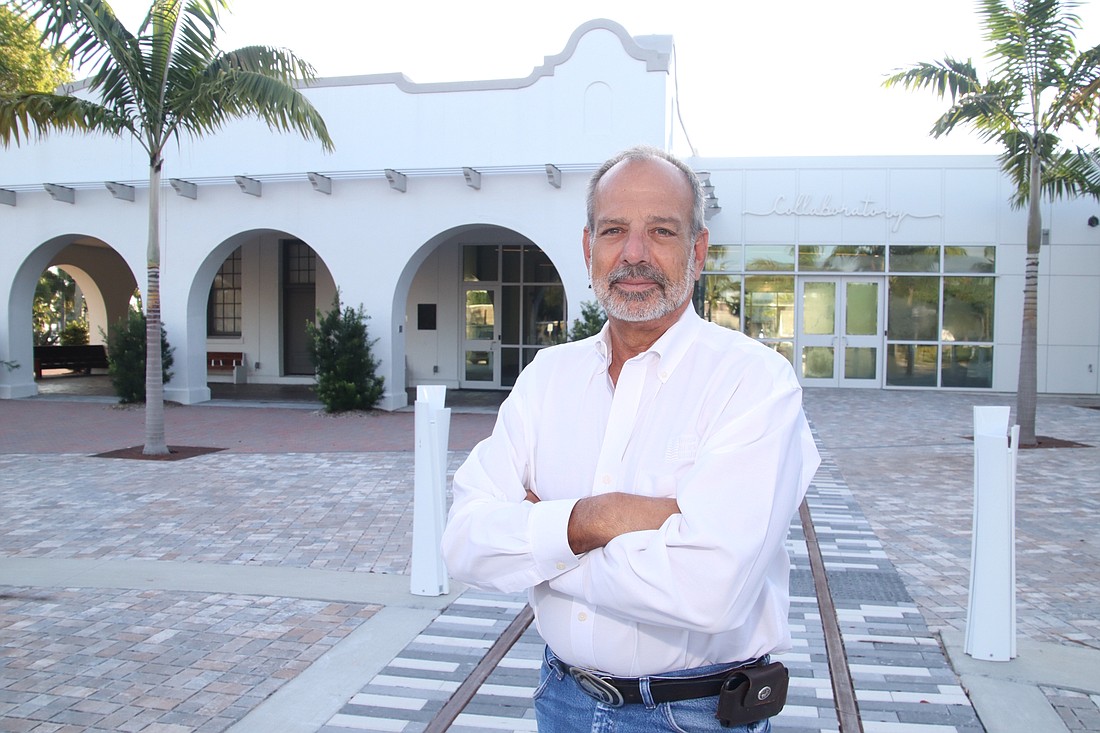- December 25, 2024
-
-
Loading

Loading

Decades ago, passengers waiting to board a train at the Atlantic Coast Line Railroad depot in Fort Myers were segregated along racial lines.
Today, those once restrictive spaces have been transformed into an open, welcoming building designed to connect neighbors with one another.
That place is also now home to the Southwest Florida Community Foundation and a new technologically-enhanced space called the Collaboratory, a 13,000-square-foot building added onto a renovated version of the depot’s original structure, built in 1924. The foundation has invited nonprofits and other groups to use the center for meetings and other events.
“We were very intentional with the concept of the Collaboratory as a space rather than a place,” says Sarah Owen, president and CEO of the Southwest Florida Community Foundation, in a statement. “We’ll be taking Collaboratory ideas and energy and events all over the region, and people will be able to connect to us digitally in what is a virtual hub that’s geographically unbound.”
The transformation of the historic structure and the building of the addition came about through a public-private partnership between the foundation and the City of Fort Myers. Funding included a $10 million New Market Tax Credit program that assists with economic development in distressed neighborhoods.
In addition to four conference rooms, the LEED-gold-certified building contains nine offices, multiple lounges, six tenant spaces and a large meeting area. The foundation invested in high-tech features like energy efficient air conditioning, an outdoor air-scrubber system, water-efficient plumbing and solar power trees.
But the organization didn’t remove all the building’s storied past, which included being a history museum following the railroad’s departure in 1971. The builder, for example, found a way to repurpose items like the original red brick walls, windows, benches and signs. The Fort Myers construction company, Owen-Amen-Kimball, even found a way to keep the railroad tracks, which pass right through the middle of the building, while still making it Americans with Disabilities Act (ADA) compliant.
Unfortunately, though, crews weren’t able to salvage and keep one of the last remaining Pullman train cars that sat at the site for years. It was removed by a massive crane.
“It was very important to the client to keep the historical significance of the train station,” O-A-K President David Dale says. “We married it up to a super modern building.”
Read all of our Cool Construction articles here:
Allure at the Gateway, a much-needed new market-rate apartment complex, has opened in Pinellas Park
Construction firm turns historic building into community foundation
Kick back at the Salt Shack, the latest waterfront restaurant to open in Tampa
New library picks up on area’s style, gives patrons space to congregate
Restauranteurs pick out-of-the-way spot to build eatery featuring massive tiki huts
Solar ground mount racking company leader had specific vision for their headquarters
Structure aims to solve parking problem in big way — with 521 spaces in multistory garage